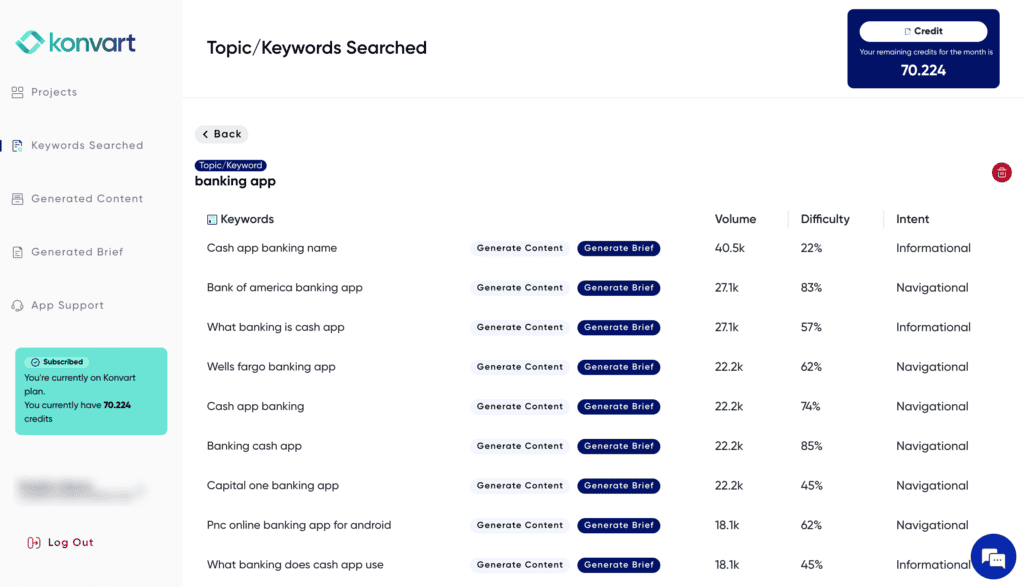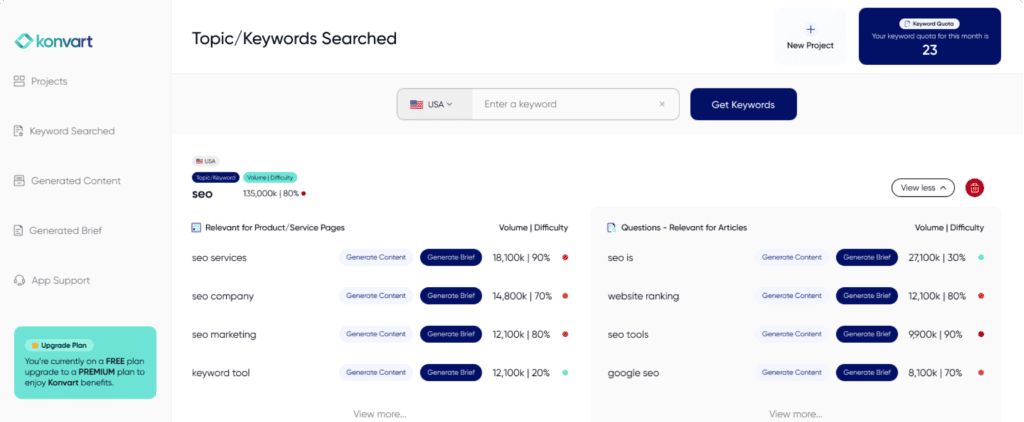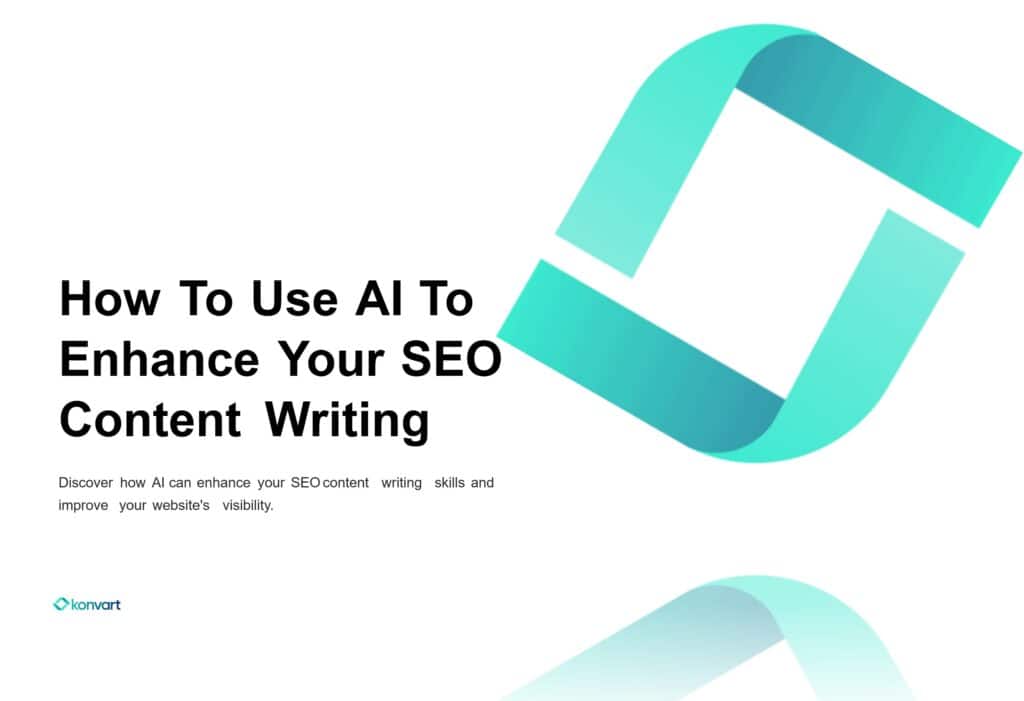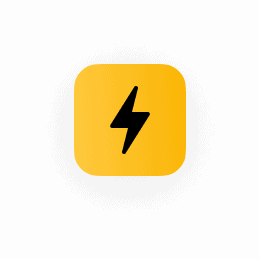SERP analysis is a fundamental process for SEO professionals aiming to optimize their content for better search engine rankings. Through SERP analysis, marketers can glean insights about current ranking factors, the intent behind user queries, and the competitive environment. This analysis informs the strategic direction of content creation and enhances the likelihood of achieving top rankings, thereby increasing visibility and driving traffic to your site.
What is SERP Analysis?
SERP analysis is figuring out what is going on in the SERP for a keyword or some keywords and the strength of competitors in order to make the right decisions when optimizing pages or articles.
Benefits of SERP Analysis
- Improved Keyword Targeting: SERP analysis helps identify which keywords are driving traffic to your competitors’ sites. By analyzing the top results, you can discern patterns in keyword usage that may be applicable to your own content strategy. This insight allows you to refine your keyword selection process, targeting those that yield high search volumes and low competition, thereby increasing your chances of ranking higher.
- Competitive Insights: This process not only reveals what your competitors are doing right but also highlights their weaknesses. For instance, if a competitor ranks highly but has poor mobile optimization or slow page speeds, these are areas you can capitalize on to outperform them. Understanding these aspects can guide your SEO efforts more effectively, allowing you to allocate resources to areas that offer the most competitive advantage.
- Content Gap Analysis: By examining the types of content that rank well for your targeted keywords, SERP analysis can reveal gaps in your own content. Perhaps there are topics or questions frequently addressed by competitors that you have overlooked. Addressing these gaps can attract more traffic and improve user engagement on your site.
- SERP Feature Opportunities: Features like featured snippets, local packs, or knowledge panels can significantly boost visibility. Analyzing search results pages provides insights into which types of content are more likely to win these coveted spots. For example, lists and step-by-step guides often appear in featured snippets for how-to queries. Tailoring content to fit these formats can increase the likelihood of occupying these positions.
- User Intent Clarification: Different keywords signify different user intents — some searchers seek information, while others might be ready to purchase. SERP analysis helps determine the predominant intent behind keywords by examining the nature of the content that ranks well. This understanding allows you to craft content that aligns with user expectations and needs, enhancing both satisfaction and conversion rates.
- Backlink Opportunities: Observing which websites link back to top-ranking pages gives clues about potential backlink opportunities for your own site. Effective backlink strategies can improve your domain authority and thus your SERP rankings.
- Trend Identification: Search engine results can indicate emerging trends and shifts in consumer interests or industry practices. Keeping an eye on these changes ensures that your content remains relevant and timely, which is crucial for maintaining and improving your search engine rankings.
How to Conduct a Comprehensive SERP Analysis
Step 1: Define Clear Objectives
Approach SERP analysis with a strategic mindset. Define clear objectives and understand the specific outcomes you aim to achieve. A strategic approach allows you to tailor your analysis to better meet the needs of your content and SEO strategy.
Begin by identifying what you want to learn from the SERP analysis. Are you trying to understand the competitive landscape, identify keyword opportunities, or gauge content performance? Setting specific goals will guide your analysis process and ensure that the data collected is relevant and actionable.
Step 2: Define Your Keywords
Begin by selecting the keywords or phrases most relevant to your content. These should be terms that your target audience frequently searches for. Utilizing tools like Konvart or SEMrush can help you discover both high-volume keywords and long-tail phrases with less competition but potentially higher conversion rates. We have explained how to do keyword research in this article.

Step 3: Analyze Search Intent
Aligning your content with the correct user intent increases the likelihood of ranking higher in SERPs.
Once you have your keywords, analyze the intent behind them. Are users looking for information, trying to make a purchase, or seeking a particular website? This can be discerned by examining the types of results that appear (e.g., blog posts, product pages, tutorials). For instance, transactional intents will favor product pages optimized for conversions, while informational intents will benefit from rich, well-researched content. See our What is SEO article to understand search intent.
Step 4: Evaluate Top-Ranking Pages
Study the pages that currently rank highly for your chosen keywords. Note their content structure, use of multimedia, and on-page SEO tactics like meta tags and keyword density.
Also, look at the content pattern. Are the top results blog posts, product pages, news articles, or informational guides? Identifying this pattern can inform the content strategy you should adopt. For instance, if how-to guides predominantly occupy the top positions for several of your targeted keywords, it signals a user preference for educational content over promotional material in that niche.
Furthermore, understand the other bits like domain strength and SERP features. Tools like Ahrefs or Moz can provide insights into why these pages rank well, such as their backlink profiles and domain authority. Another key tool here is Konvart; Konvart does the analysis for this bit and can provide that insight to you in the form of a content brief or utilize it when writing SEO content.
Step 5: Identify SERP Features
Google often enriches its SERPs with features like featured snippets, knowledge panels, and local packs. Identifying whether these features appear for your keywords is important because they can significantly impact click-through rates. Identifying which features are triggered by your keywords can provide insights into user intent and the type of content Google deems most relevant for those queries.
For instance, a high prevalence of video results could suggest that users prefer visual content for that particular query and a featured snippet means Google expects a direct answer from a webpage and can significantly increase that page’s visibility. If a featured snippet is present, for example, structuring your content to qualify for this position could drive additional traffic to your site. In that case, SEO professionals should aim to format their content to increase their chances of being picked up for these features. Structuring data properly and providing clear, concise answers to common questions within your content can help achieve this.
Step 6: Check for Other Opportunities
When conducting a SERP analysis, it is imperative to explore additional opportunities that may not be immediately apparent. This step involves identifying gaps and niches within the search results that your content can fill. By doing so, you can uncover less obvious areas where your website could potentially make a significant impact.
Exploring Alternative Keywords
One effective method is to look for alternative keywords that are related to the primary keywords but may have lower competition. Areas like Google’s “People also ask” and “Related searches” sections provide insights into other queries that users are interested in. Analyzing these can help you discover new keyword opportunities that might not be as saturated.
Analyzing Content Gaps
Content gaps are areas where user needs or questions aren’t fully addressed by existing search results. To identify these, review the top-ranking pages and note any common questions or topics that they do not cover. Creating content that fills these gaps can give you a competitive edge, as you’re directly responding to unmet needs within your audience.
Assessing Different Content Formats
Different users prefer different types of content. Some might favor in-depth articles, while others might lean toward videos or infographics. Assess the current SERP for a variety of content formats. If most of the top results are text-based and you notice a lack of video content, this could represent an opportunity to produce something unique like explainer videos or tutorials.
Identifying Questions and Needs
Use tools like Konvart (brief generator) to find specific questions that users have around your topic. This tool visualizes search questions and prepositions associated with your keyword, offering a broader view of what your audience seeks. Addressing these specific questions through your content can significantly improve its relevance and appeal.
Step 7: Get Other Ideas Using Competitor Gap Analysis
Begin by selecting a set of competitors who are currently outperforming you in search engine results pages (SERPs). Then, look at their content or use an SEO tool such as Ahrefs to scan their content and compare it against yours, focusing on various keywords and topics.
One key benefit of this analysis is its ability to uncover long-tail keywords that have less competition but are highly relevant to your audience. These keywords often represent low-hanging fruit, offering quicker wins than more competitive terms. For instance, while a competitor might dominate broad terms like “best digital cameras,” the gap analysis might reveal niche opportunities such as “best digital cameras under $500 for beginners.”
Local SERP Analysis
Local SERP analysis involves examining the search engine results pages (SERPs) that appear for queries specific to particular areas. It helps identify what businesses or websites are ranking in a certain locale and the factors contributing to their visibility.
Key Components of Local SERP Analysis
- Google Business Profile Listings: One of the first elements to assess is how Google My Business listings are integrated into the SERPs. These listings provide quick snippets of business information, including reviews, operating hours, and location. Ensuring your business’s Google My Business is fully optimized and up-to-date is necessary for effective local SEO.
- Local Pack Analysis: Often seen at the top of Google’s SERPs, the Local Pack displays three businesses that are relevant to the search query within a mapped area. Analyzing which businesses appear in this coveted spot can offer insights into local ranking factors such as proximity, relevance, and prominence.
- Organic Results: Beyond the Local Pack, the regular organic results should also be scrutinized. These results can reveal how well websites are optimized for local search terms and what content types are most effective at gaining visibility.
- Search Features: Features like FAQs, featured snippets, and image carousels can also appear in local searches. Identifying these features can help tailor content strategies to leverage similar opportunities.
Other Bits for Local SEO
Analyzing Competitor Strategies
Evaluating competitors who successfully rank in desired local SERPs is crucial. This involves looking at their keyword optimization strategies, backlink profiles, and content approaches. Utilize SEO tools to get comprehensive data on competitors’ performance and help uncover gaps in your own strategy.
Utilizing Reviews and Ratings
Reviews and ratings play a significant role in local SEO rankings. Analyzing top-performing businesses in local SERPs often shows a strong presence of positive reviews and active customer interaction. Strategies to improve your own site’s reviews should be considered, as they can influence both rankings and consumer trust – you could ensure your review link is sent to every customer as part of the after-sale experience or incentivise them to provide reviews.
Adjusting to Mobile-First Indexing
With Google’s shift towards mobile-first indexing, ensuring that your local SEO strategy considers mobile users is more important than ever. This means analyzing SERPs on mobile devices specifically, as they can differ significantly from desktop SERPs due to factors like location accuracy and device type.
Google SERPs and User Intent
User intent refers to the goal someone has in mind when typing a query into a search engine.
Decoding User Intent
When a user enters a query, Google’s primary aim is to return results that best match the user’s intent. For instance, if someone searches for “how to bake a cake,” they are likely looking for recipes or baking tips (informational intent). Conversely, a search for “buy chocolate cake online” indicates a transactional intent. Each type of intent influences the kind of content that Google displays in its SERPs.
Impact on SERP Features
Google uses various SERP features to cater to different intents. For informational queries, featured snippets, knowledge panels, and related questions (People Also Ask boxes) are common. These features aim to provide quick answers and in-depth information directly on the results page. For transactional queries, you might see shopping ads, product listings, and local business information that facilitate purchase decisions.
Analyzing SERP Layouts
The layout of Google’s SERP itself provides insights into the presumed user intent behind a search query. A keyword triggering video results or image packs suggests visual content may better satisfy searcher intent. Similarly, the presence of local pack results implies that the query has local intent. SEO professionals must analyze these layouts to understand what Google believes users want to see for particular queries.
Practical Application in SEO
For SEO experts, recognizing the alignment between user intent and SERP features allows for more targeted content strategies. If a keyword predominantly triggers informational features like a featured snippet, creating well-structured, informative content can increase chances of ranking in that coveted spot. On the other hand, if transactional features dominate the SERPs for a keyword, focusing on product pages and optimizing for Google Shopping results might be more beneficial.
9 Types of SERP Features to Monitor

Understanding the various types of SERP (Search Engine Results Page) features is essential for SEO professionals aiming to optimize their content and improve visibility. Here are ten SERP features to monitor:
- Featured Snippets: These appear at the top of Google search results and provide a quick answer or summary to the user’s query, often pulled directly from a webpage. They can significantly increase click-through rates as they position the content as authoritative.
- Local Packs: For queries with local intent, Google displays a Local Pack that includes a map and a list of businesses with details such as address, reviews, and hours. This feature is critical for businesses targeting local customers.
- Knowledge Panels: These panels appear on the right side of search results and offer succinct, authoritative data about broad topics like public figures, places, or organizations directly from Google’s Knowledge Graph.
- Site Links: These are expanded links from a main website listing that help users navigate to relevant sections of the site directly from the SERP, thereby improving user experience and site traffic.
- Image Packs: Often displayed for queries that might benefit from visual aids, these horizontal rows or grids of images link back to their source websites, driving traffic particularly in industries where visual appeal is important.
- Videos: Video results are increasingly common for how-to queries, reviews, tutorials, and more. These can appear as a single result or part of a larger video pack.
- People Also Ask (PAA): This feature shows related questions asked by users around your query. Each question can expand into an answer sourced from a webpage with a link. Monitoring PAA can provide insights into related topics and user intent.
- Shopping Results: For commercial queries, Google often shows a carousel or grid of product listings with images, prices, and sometimes ratings. These are crucial for e-commerce sites looking to attract buyers.
- Scholarly Articles: For academic or scientific queries, Google might display links to relevant research papers or academic documents. This is particularly useful for educational institutions or publishers targeting academic audiences.
Investigate if You Can Rank
After your initial SERP analysis, you need to understand if you can rank. The initial steps in the SERP analysis should provide the how; now you need the if.
Keyword Search Volume and Difficulty
Begin by evaluating the keyword difficulty, which is often provided by SEO keyword research tools like Konvart.
Keyword difficulty is an index that measures how hard it would be to rank for a particular keyword in the organic search results. This metric is usually calculated based on the domain authority of the websites currently ranking in the top positions for that keyword and the quality of content they provide.
A keyword with a high difficulty score indicates that well-established sites with robust SEO strategies are already performing well for that term. Competing with these can be challenging, especially for newer or less authoritative websites.
Keyword search volume is an estimate of how many people are searching using that keyword every month. A high search volume indicates significant interest, which might suggest a valuable opportunity for targeting. However, this also often comes with increased competition.
Effective use of SEO tools here can not only save time but also offer strategic insights. For example, Konvart’s Keyword Research tool provides search volume data and keyword difficulty percentage score to help you make the right decision.
Competition Analysis
Analyze the competition by reviewing the top-ranking pages. Look at their domain authority, page authority, and backlink profiles. High authority sites with extensive backlink profiles suggest a competitive environment where new entries might struggle to outrank established players.
Domain authority (DA) is a metric developed by Moz that predicts how well a website will rank on SERPs. Websites with higher DA are generally more difficult to outrank, especially if they have established credibility and content quality in your niche. Checking the DA of top-ranking pages gives you an idea of what you’re up against.
In addition to DA, the quality and quantity of inbound links to a website can tell you what you are up against. Analyzing the link profiles of competing websites can provide insights into how difficult it will be to surpass them in rankings. A site with thousands of high-quality backlinks will pose a greater challenge than one with fewer, lower-quality links.
If you have been in the SERP space for your industry for a while and have done a lot of off-page SEO, you may have a high domain authority which means you can target high keyword difficulty keywords and rank
Content Quality and Relevance
Examine the quality of content that currently ranks for your target keywords. High-quality, relevant content that addresses user intent is more likely to rank well. Assess whether you can produce content that matches or surpasses the quality of what’s already ranking. Consider factors like depth of coverage, freshness, user engagement, and multimedia usage.
Next, analyze the content types that dominate the first page. Are they blog posts, product pages, news articles, or comprehensive guides? This will help you understand what Google currently favors and guide your content creation strategy. For example, if the top results are mostly video, this indicates that users are looking for video content. In that case, do you have the resources to create a video? If it is long-form content, do you have the time? (ps. if you don’t, check out Konvart).
Search Intent Matching
Align your content with the predominant intent of search queries to increase your chances of ranking well. For instance, if most top-ranking pages for a keyword are product reviews, your content should likely follow suit to compete effectively. In this case, do you already have real product reviews? If you don’t, that is not the keyword for you.
Technical SEO Readiness
Ensure your website’s technical SEO foundation can support high rankings. This includes fast load times, mobile-friendliness, secure connections (HTTPS), clear site architecture, and proper use of schema markup. Websites that excel in these areas are better positioned to compete in SERPs. If your website isn’t technically ready – maybe due to something you need a web developer for, such as core web vitals –you can still go ahead, but technical SEO is often the tie-breaker between SERP competitors when both sites are the same for the other SEO metrics.
Using Your SERP Analysis in Your SEO and Content Strategy
Integrating the insights from your SERP analysis into your SEO and content strategy is a strategic approach to enhance your website’s visibility and relevance. This integration involves several key steps, each aimed at refining different aspects of your digital presence based on the data derived from SERP analysis.
Using Identified Keywords
Analyzing the SERPs can reveal which keywords your competitors are ranking for that you are not. This insight allows you to expand your keyword list strategically, targeting those that can drive traffic but are not overly saturated with competition. For instance, if competitors consistently rank for long-tail keywords, incorporating similar phrases into your content could capture additional search traffic.
Optimizing Content for User Intent
Create the type of content that is needed to match the search intent. Whether that is a long-form article or product page with product schema.
Improving On-Page SEO Elements
The structure of currently ranking pages can provide clues about optimal on-page SEO practices. Elements such as headings play significant roles in rankings. If top-ranking pages consistently use specific terms or formats in these elements, mirroring this approach—while keeping it unique to your brand—can improve your own page rankings.
Enhancing User Experience
SERP analysis often highlights features that improve user experience and engagement, such as fast-loading pages and mobile optimization. If top SERPs feature sites with superior user experience, it’s a clear indicator that improving these aspects of your own site could benefit your SEO efforts. Tools like Google’s PageSpeed Insights can help you analyze where your site stands concerning performance metrics.
Leveraging SERP Features
Finally, take note of any SERP features commonly appearing in searches relevant to your business—such as featured snippets, local packs, or knowledge panels. Tailoring content to target these features can significantly increase visibility. For instance, structuring content to answer questions directly can increase the likelihood of appearing in featured snippets.
5 Best Tools for SERP Analysis
Here are five of the best tools that can help you gain deep insights into search engine results pages, enabling you to optimize your content and improve your rankings:
- Konvart: If you are looking to save time and have a tool do some part of the SERP analysis for you, Konvart is the right tool. Konvart offers results of SERP analysis in the form of a content brief so you know what exactly you need to write. It also has keyword research features so you discover search volume and difficulty.
- Ahrefs: Ahrefs offers comprehensive SERP analysis features. Its Site Explorer allows you to see the top organic keywords a site ranks for, the exact position in SERP, and the estimated traffic each keyword brings. Ahrefs also provides visibility into the SERP features that are appearing for your keywords, helping you tailor your content to target these opportunities.
- SEMrush: SEMrush offers detailed insights into SERPs with its Keyword Overview tool. You can analyze the top 100 Google results for any keyword, see various SERP Features that are triggered by your query, and understand the competitive landscape. Their Position Tracking tool also allows you to monitor daily updates of your keyword rankings.
- Moz Pro: Moz Pro’s Keyword Explorer not only gives information on keyword rankings but also provides SERP analysis that includes a list of pages currently ranking for those keywords along with their Page Authority and Domain Authority. This tool helps in understanding how difficult it might be to rank for a specific keyword.
- Serpstat: This tool is great for those who need an all-in-one platform that offers detailed SERP analysis alongside other SEO features. Serpstat’s SERP Analysis tool helps you analyze competitors’ ads and organic strategies on the SERPs, providing data on competitors’ positions, PPC campaigns, and the potential traffic they are capturing.
Monitoring Changes and Trends
Search engines frequently update their algorithms, impacting how pages are ranked. Regularly updating your SERP analysis will help you stay ahead of these changes and adjust your SEO strategy accordingly. This could involve adapting to new ranking factors or refining your focus on certain types of content.
Also, assess the performance of your pages for their target keywords. Check to see if you are ranking for them and refind your tactics to ensure you have the best position.
In addition, look at engagement metrics such as bounce rate and average time on page for your top-performing pages. These indicators can give clues about content quality and user satisfaction. High engagement rates often correlate with higher rankings. For pages with high engagement rates, look at your content style – what did you do differently than the low-engagement pages? Copy that moving forward.
Beyond attracting visitors, the ultimate goal of any SEO strategy should be to convert those visitors into customers or subscribers. Tracking conversion metrics like newsletter sign-ups, product purchases, or account registrations tied to organic search visitors helps determine the ROI of your SEO efforts.
Lastly, keep an eye on how direct competitors are performing in SERPs. Regularly check if they introduce new content or optimize existing pages, which might influence their rankings. Competitive analysis tools can automate this process by tracking changes in rankings and alerting you to updates in competitor strategies.

















